Complete Solutions to Exercise of chapter MECHANICAL PROPERTIES OF SOLIDS of Class 11 book with complete answers and questions
| Class 11 | PHYSICS |
| Chapter | MECHANICAL PROPERTIES OF SOLIDS |
| NARAYANA | Exercise |
| Number Of Questions | 34 |
| Academic Year | 2023-24 |
The potential energy function for the force between two atoms in a diatomic molecule is approximate given by `U(r) = (a)/(r^(12)) - (b)/(r^(6))`, where `a` and `b` are constants and `r` is the distance between the atoms. If the dissociation energy of the molecule is `D = [U (r = oo)- U_("at equilibrium")],D` is
View SolutionFind out longitudinal stress and tangential stress on a fixed block.
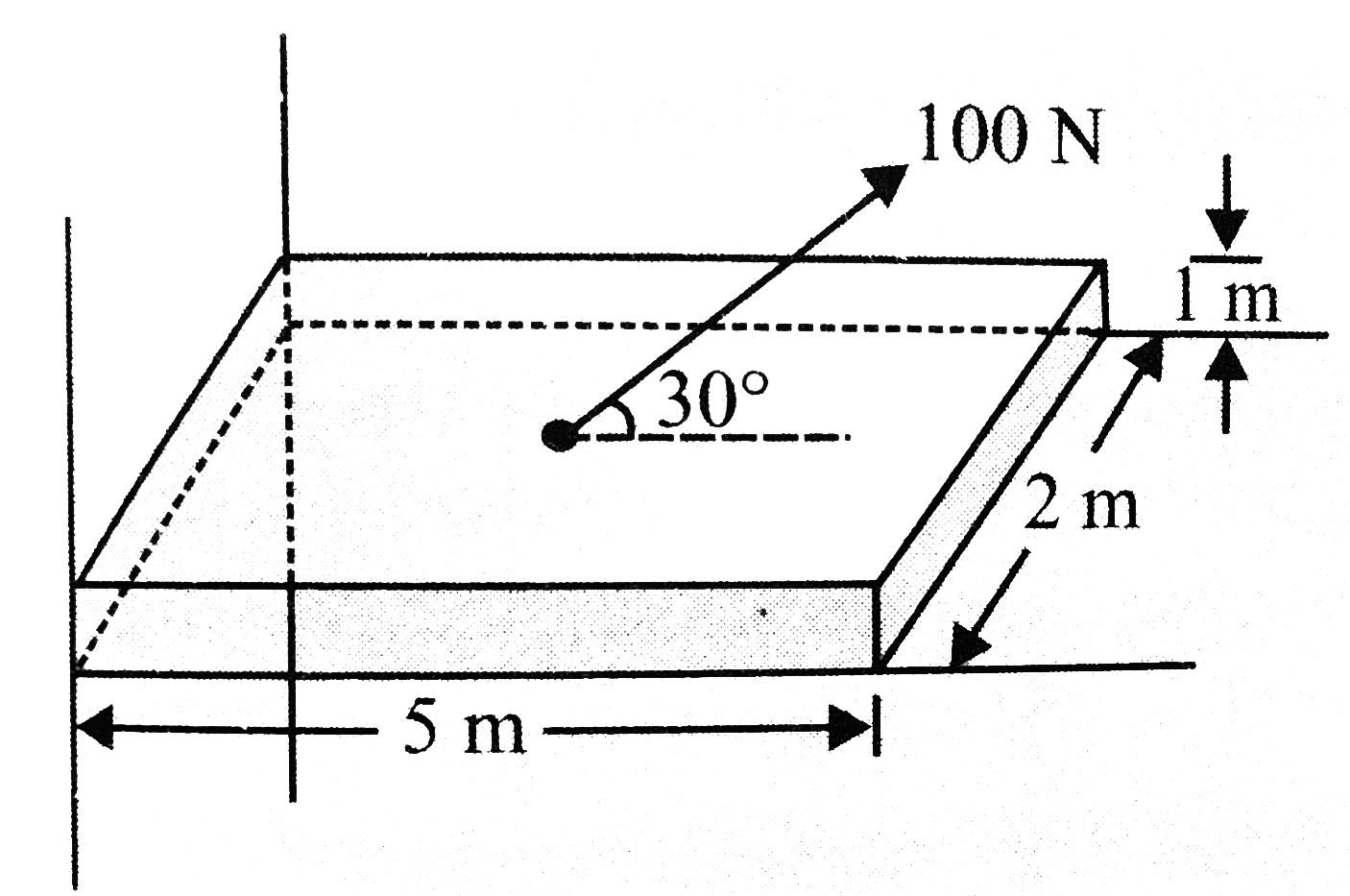
View SolutionA uniform rope of mass `M` and length `L`, on which a force `F` is applied at one end, then find stress in the ropw at a distance `x` form the end where force is applied?
View SolutionTwo equal and opposite forces `F` and `-F` act on a rod of unifrom cross-sectional ara `A`, as shown in the figure. Find the (i) shearing (ii) longitual stress on the section `AB`.
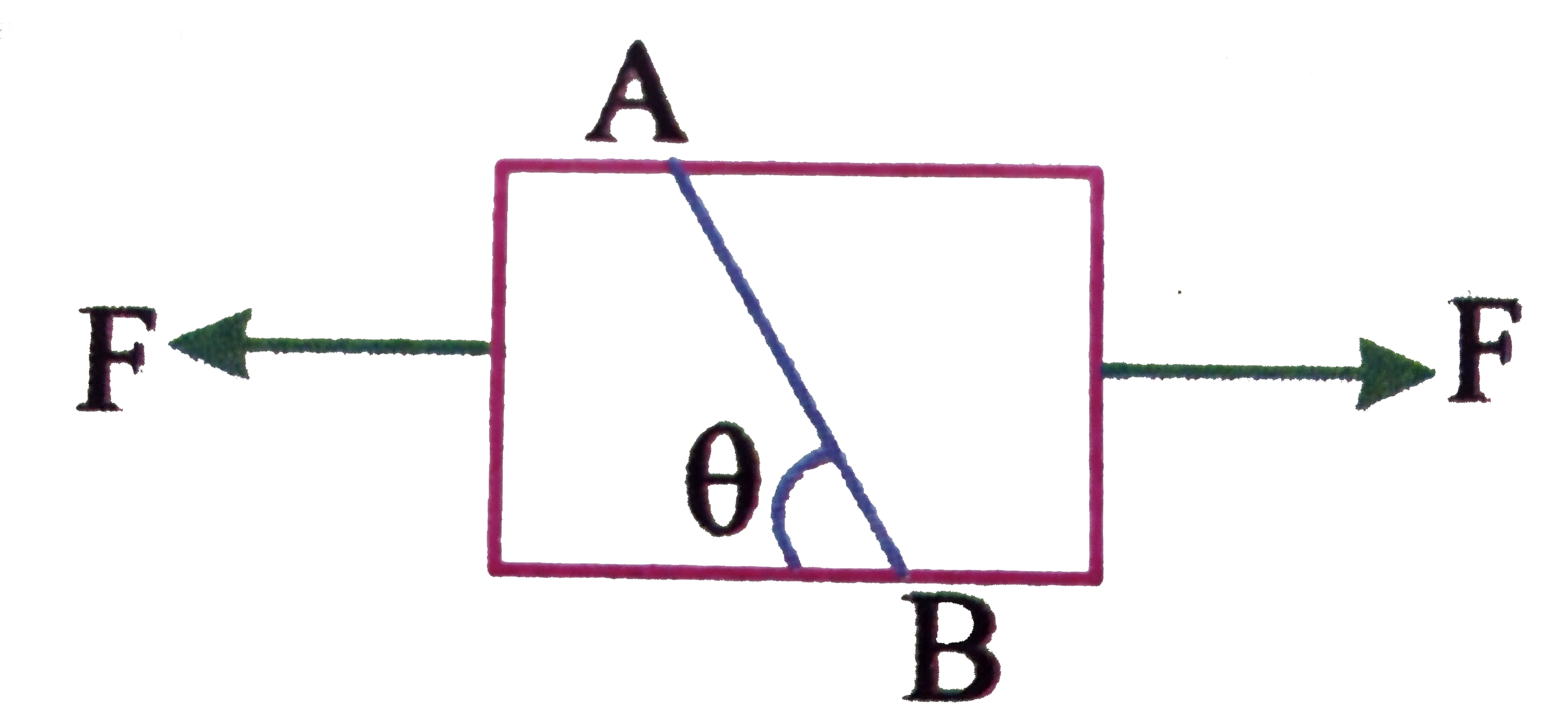
View SolutionA rubber rope of length `8 m` is hung from the ceiling of a room. What is the increase in length of the rope due to its own weight? (Given: Young's modulus of elasticity of rubber `= 5 xx 10^(6) N//m^(2)` and density of rubber `=1.5xx10^(3)kg//m^(3)`. Take `g=10ms^(-2))`
View SolutionThe length of a metal wire is `l_(1)` when the tension in it is `F_(1)` and `l_(2)` when the tension becomes `F_(2)`. Find the natural length of wire.
View SolutionA horizontally orientied unifrom copper rod of length `l` is rotating about a vertical axis passing through its centre. Calculate the rotated frequency at which the rod ruptures. Breaking or rupture strength of copper is `sigma` and density of copper is `rho`.
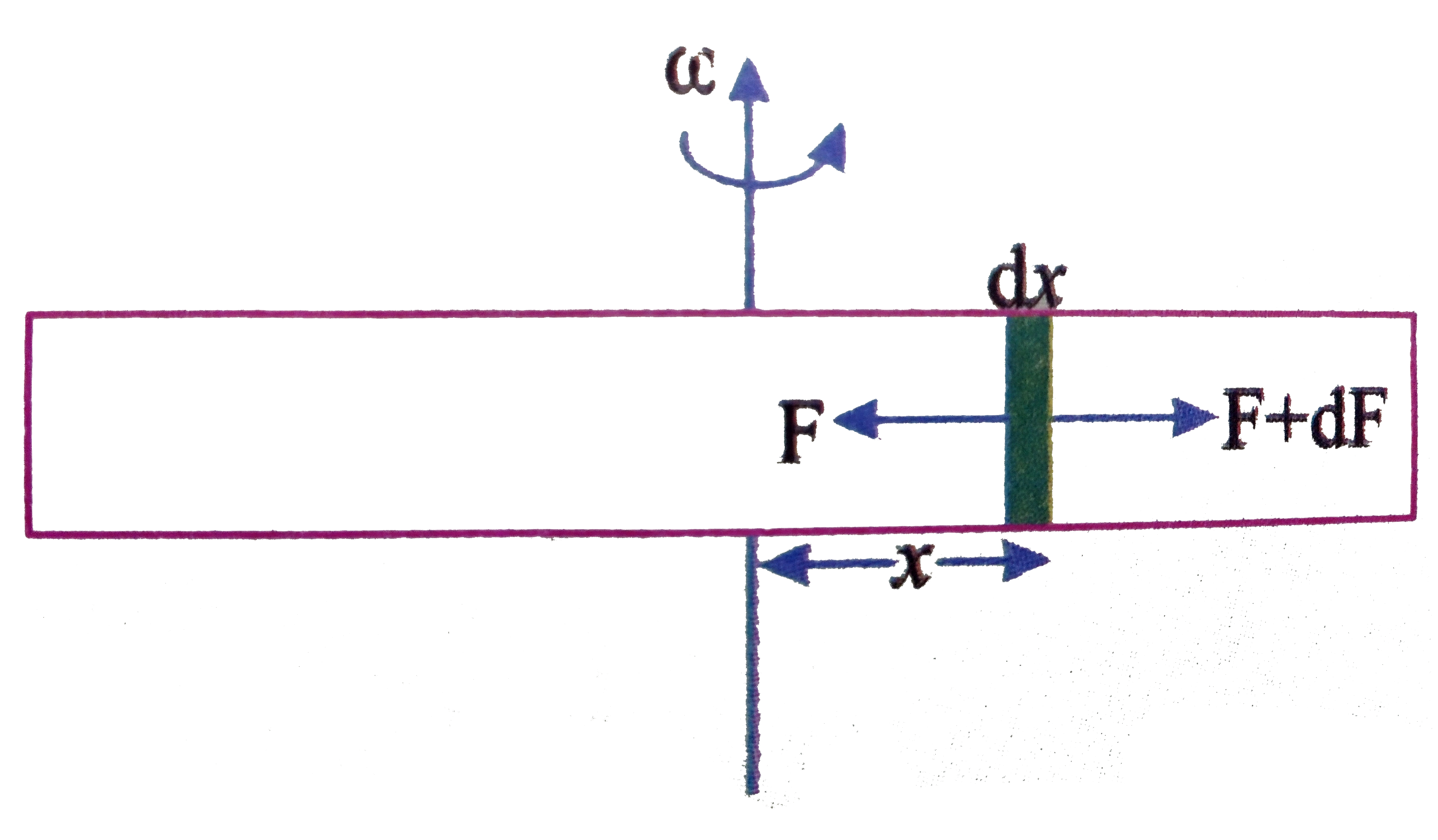
View SolutionA ring of radius `r` made of wire of density `rho` is rotated about a stationary vertical axis passing through its centre and perpendicular to the plane of the ring as shown in the figure. Determine the angular velocity (in rad/s) of ring at which the ring breaks. The wire breaks at tensile stress `sigma`. Ignore gravity. Take `sigma//rho = 4` and `r= 1 m.`

View SolutionA body of mass `m` s connected to an inextensible thread of length `L` si whirled in horizontal circle. Find the maximum angular velocity with which it can be whirsted without breaking the thread (Breaking stress of thread `=S`)
View SolutionThe adjacent graph shows the estension `(Deltal)` of a wire of length 1m suspended from the top of a roof at one end and with a load W connected to the other end. If the cross-sectional area of the wire is `10^-6m^2`, calculate the Young's modulus of the material of the wire.
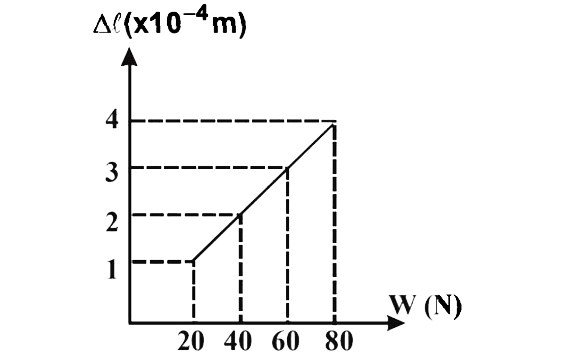
View SolutionA slightly conical wire of length `l` and radii, `r_(1)` and `r_(2)` is strecthced by two forces each of magnitude `F` applied parallel to length in opposide directions and normal to end faces. If `Y` denotes the Young's modulus then find the elogation of the wire `(r_(2) gt r_(1))`.
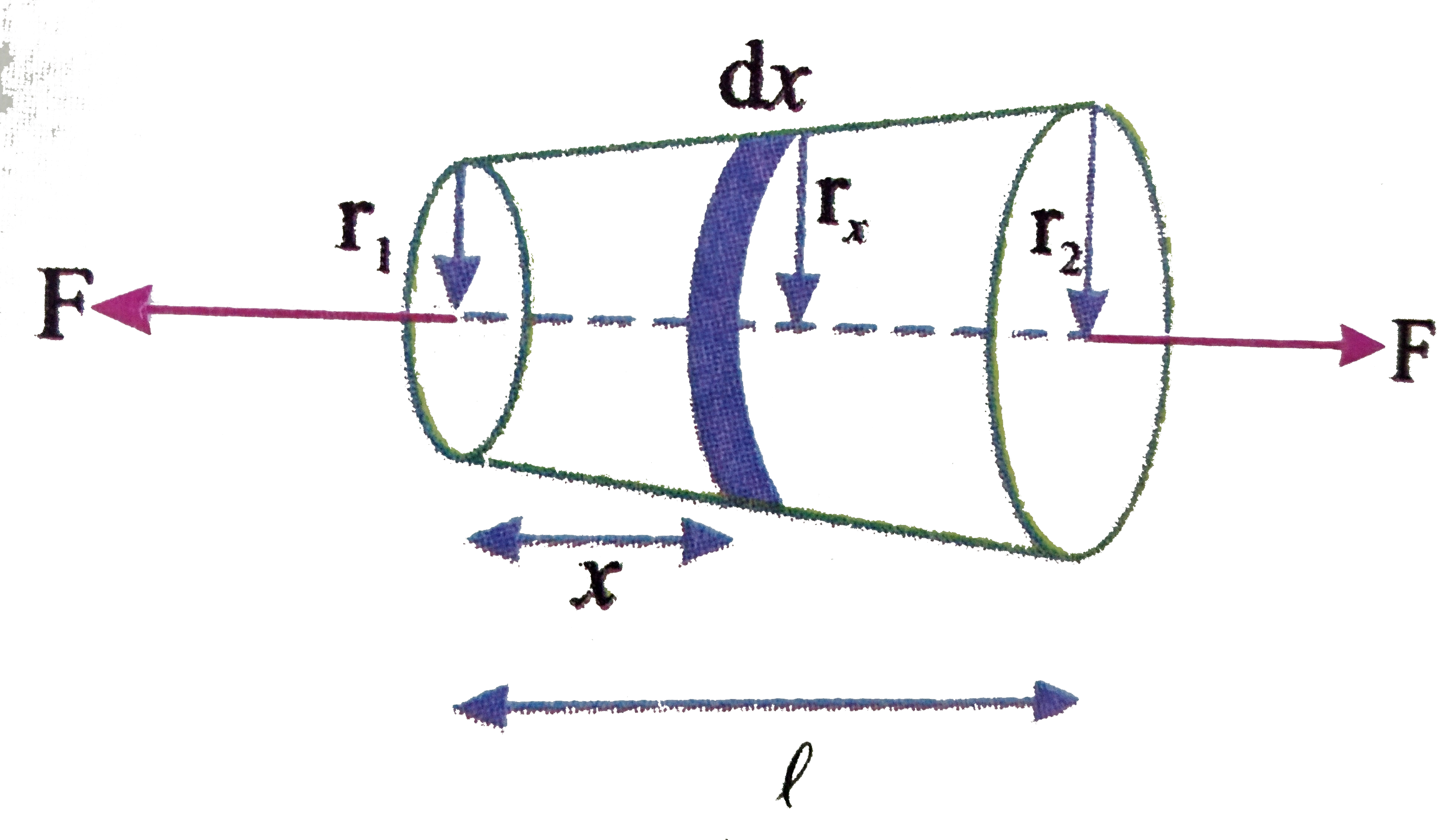
View SolutionA steel rod of cross-sectional area `1m^(2)` is acted upon by forces as shown in the Fig. Determine the total elongation of the bar. Take `Y = 2.0xx10^(11) N//m^(2)`
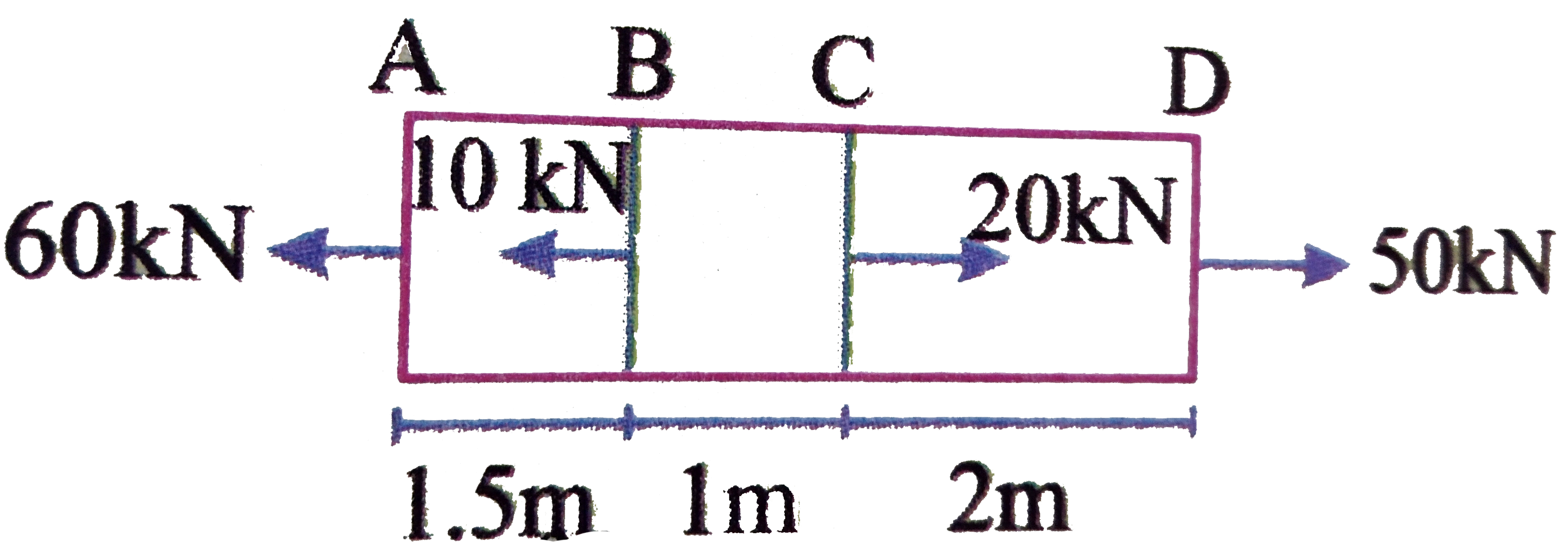
View SolutionA uniform rod of length `l`, mass `m`, cross-sectional area `A` and Young's modulus `Y` is rotated in horizontal plane about a fixed vertical axis passing through one end, with a constant angular velocity `omega`. Find the total extension in the rod due to the tension produced in the rod.
View SolutionA uniform rod of length `L` and mass `M` is pulled horizontally on a smooth surface with a force `F`. Determine the elongation of rod if Young's modulus of the material is `Y`.
View SolutionA rod `PQ` of length `1.05m` having negligible mass is supported at its ends by two wires one of stell (wire `A`), and the other of aluminium (wire `B`) of equal lengths as shown in fig. The cross-sectional areas of wires `A` and `B` are `1.0mm^(2)` and `2.0mm^(2)` respectively. At what point along the rod a load `W` be suspended in order to produce
(a) equal stress, (b) equal strains in both steel an aluminium.
`(Y_("steel") = 200 GPa, Y_("aluminium") = 70 GPa)`
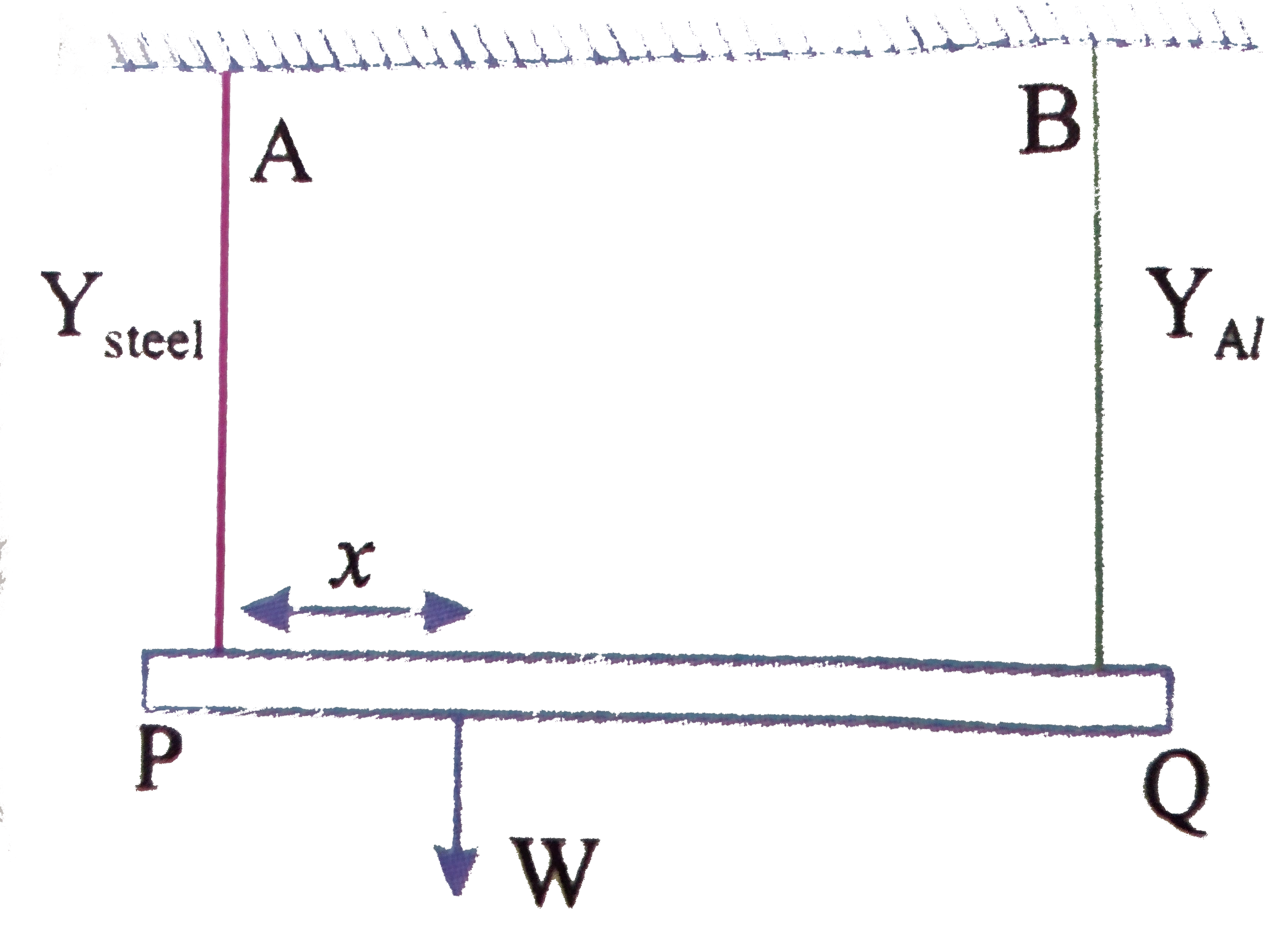
View SolutionA reinforced concrete column consists of concrete filled with iron bars. Assume that iron occupies one-twentieth of the total cross-section area and Young's modulus of concrete is one-tenth of that of iron. The concrete column is under a compressive load `P`. Determine the fraction of load on the concrete.
View SolutionTwo rods are joined between fixed supports as shown in the figure. Condition for no change in the length of individual rods with the increase of temperature will be
`"(" alpha_(1), alpha_(2)=` linear expansion coefficient
`A_(1), A_(2)=` Area of rods
`Y_(1), Y_(2)=` Young modulus `")"`
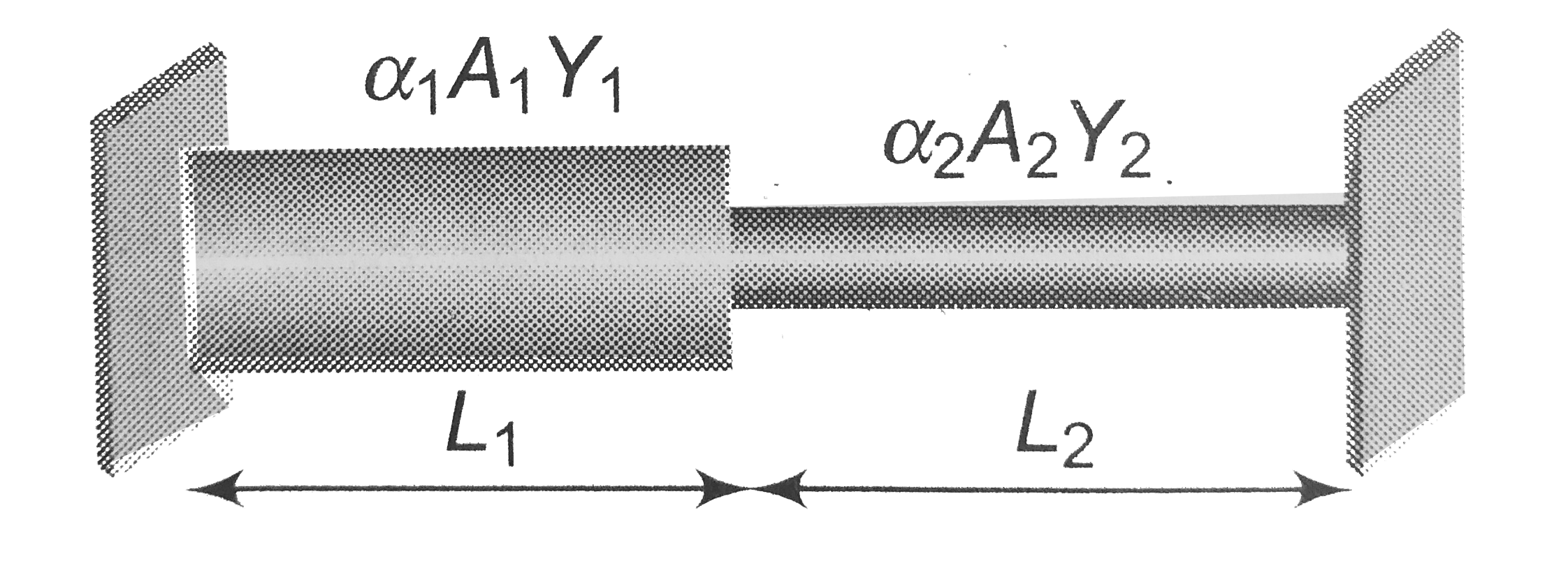
View SolutionA steel of area of cross-section `A` and length `2L` is calmped family between two rigid supports separated by a distance `'2L'`. A body is hung from the middle point sags by a distance `x`. Calculate the mass of the body body and the angle made by the string with the horizontal. (Young's modulus of Steel `= Y`)
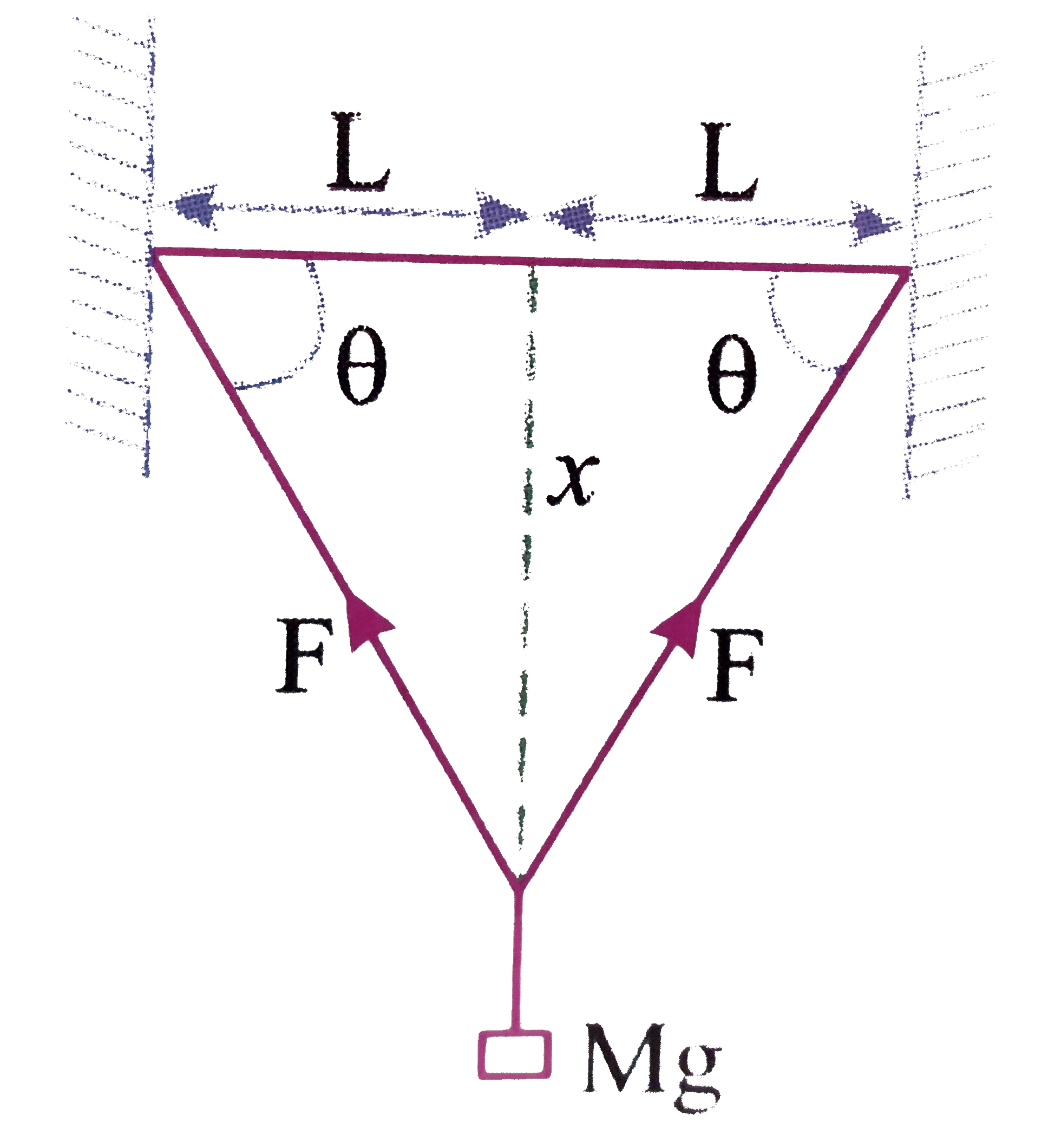
View SolutionA mild steel wire of length `1.0m` and cross sectional area `5.0xx10^(-2)cm^(2)` is stretched, within its elastic limit horizontally between two pillars. A mass of `100g` is suspended form the midpont of the wire. Calculate the depression at the midpoint `(Y_("steel) = 200GPa)`
View SolutionThe edges of an aluminum cube are `10 cm` long. One face of the cube is firmly fixed to a vertical wall. A mass of `100 kg` is then attached to the opposite face of the cube. Shear modulus of aluminum is `25 xx 10^(9) Pa`, the vertical deflection in the face to which mass is attached is
View SolutionA piece of copper having a rectangular cross section of `15.2 xx 19.1 mm` is pulled in tension with 45,500N, force producing only elastic deformation. Calculate the resulting strain. Shear modulus of elasticity of copper is `42 xx 10^(9)Nm^(-2)`.
View SolutionTwo cylinders `A` and `B` of the same matieral have same length, their radii being in the ratio of `1:2` repectively. They are joined end to end as shown in figure. The upper end of `A` is rigidly fixed. The lower end of `B` is twised through an angle `theta`, the angle of twist of the cylinder `A` is:

View SolutionWhat is the density of ocean water at a depth, where the pressure is 80.0 atm, given that its density at the surface is `1.03 xx 10^(3) kg m^(-3)`? Compressibilty of water `= 45.8 xx 10^(-11) Pa^(-1)`. Given 1 atm. =`1.013 xx 10^(5) Pa`.
View SolutionDetermine the volume contraction of a solid copper cube, 10 cm on an edge when subjected to hydraulic pressure of `7 xx 10^(6)Pa`. Bulk modulus of copper = 140 Gpa.
View SolutionA material has normal density `rho` and bulk modulus `K`. The increase in the density of the material when it is subjected to an external pressure `P` from all sides is
View SolutionA copper wire of cross sectional asrea 0.01 cm is under a tension of 20 N. Find the decrease in the cross sectional area. Young modulus of copper `=1.1xx10^11Nm^-2` and Poisson ratio 0.32.
View SolutionWhen a wire of length `10m` is subjected to a force of `100N` along its length, the lateral strain produced is `0.01xx10^(-3)`. The poisson's ratio was found to be `0.4`. If area of cross section of wire is `0.25 m^(2)`, its young's modulus is
View SolutionThe pressure that has to be applied to the ends of a steel wire of length 10cm to keep its length constant when its temperature is raised by `100^@C` is : (For steel Young's modulus is `2xx10^11 Nm^-2` and coefficient of thermal expansion is `1.1xx10^-5K^_1`)
View SolutionA 40 kg boy whose leg are `4cm^2` in area and `50cm` long falls through a height of `2m` without breaking his leg bones. If the bones can stand a stress of `1.0xx10^8(N)/(m^2)`, calculate the Young's modulus for the material of the bone.
View SolutionA copper wire `2m` long is stretched by `1mm`. If the energy strored in the stretched wire is converted into heat, then calculate the rise in temperature of the wire.
View SolutionA catapult consists of two parallel rubber cords each of length `20cm` and cross-sectional area `5cm^(2)`. When stretched by `8cm`, it can throw a stone of mass `4gm` to a vertical height `5m`, the Young's modulus of elasticity of rubber is `[g = 10m//sec^(2)]`
View SolutionA uniform cylinder of length L and mass M having cross-sectional area A is suspended, with its length vertical, from a fixed point by a massless spring such that it is half submerged in a liquid of density `sigma` at equilibrium position. The extension `x_0` of the spring when it is in equlibrium is:
View SolutionA spring of force constant `800N//m` has an extension of 5cm. The work done in extending it from 5cm to 15cm is
View SolutionTwo springs of spring constants `1500N//m` and `3000N//m` respectively are streched by the same force. The potential energy gained by the two springs will be in the ratio
View Solution
Exercise questions and complete solutions for chapter MECHANICAL PROPERTIES OF SOLIDS of NARAYANA PHYSICS (HINGLISH) of Class 11